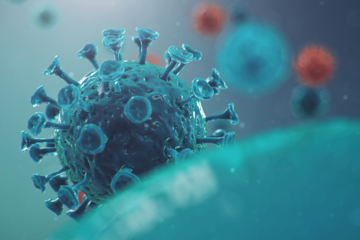We found 71 results that contain "article"
Posted on: #iteachmsu

Playlist-- What Is Agile Methodology in Project Management?
The Agile methodology is a way to manage a project by breaking it up into several phases. It involves constant collaboration with stakeholders and continuous improvement at every stage. Once the work begins, teams cycle through a process of planning, executing, and evaluating. Continuous collaboration is vital, both with team members and project stakeholders.
In this FAQ article, we share everything you need to know about Agile methodologies, Agile project management, and Agile methodology frameworks. We’ll also explain how you can use our Agile teamwork template to get started with Agile even faster.
In this FAQ article, we share everything you need to know about Agile methodologies, Agile project management, and Agile methodology frameworks. We’ll also explain how you can use our Agile teamwork template to get started with Agile even faster.
Posted on: #iteachmsu


Resources for new Spartans: Health Care and Insurance-Playlist
***This is part of a series of articles compiling useful resources and information for new graduate students. Some of the information in this series will be relevant for anybody new to MSU, including undergraduates, postdocs, faculty and staff. The topical areas range from settling into East Lansing and Michigan, getting to know which services can be found on campus to administrative steps and information needed throughout a graduate program at MSU. For the full series, see this playlist dedicated to international graduate students.***
Health Insurance
As an international student, you need to have health insurance. MSU will automatically enrol you in the Blue Care Network health insurance. There are only very few circumstances in which you can waive the health insurance coverage. This insurance can be used for pretty much anything except for dental and vision care.
Dental insurance is covered through Delta Dental and can be purchased in two enrolment periods (July-October for a Fall semester start and November-February for a Spring semester start). Depending on your employment type at MSU, you probably qualify for a reduced fee (i.e. MSU will pay half of the cost of coverage).
Health Insurance
As an international student, you need to have health insurance. MSU will automatically enrol you in the Blue Care Network health insurance. There are only very few circumstances in which you can waive the health insurance coverage. This insurance can be used for pretty much anything except for dental and vision care.
Dental insurance is covered through Delta Dental and can be purchased in two enrolment periods (July-October for a Fall semester start and November-February for a Spring semester start). Depending on your employment type at MSU, you probably qualify for a reduced fee (i.e. MSU will pay half of the cost of coverage).
Posted on: #iteachmsu


Health and Nutrition Tips
It’s easy to get confused when it comes to health and nutrition.
Even qualified experts often seem to hold opposing opinions.
Yet, despite all the disagreements, a number of wellness tips are well supported by research.
Here are 27 health and nutrition tips that are actually based on good science.
1. Don’t drink sugar calories
Sugary drinks are among the most fattening items you can put into your body.
This is because your brain doesn’t measure calories from liquid sugar the same way it does for solid food (1Trusted Source).
Therefore, when you drink soda, you end up eating more total calories (2Trusted Source, 3Trusted Source).
Sugary drinks are strongly associated with obesity, type 2 diabetes, heart disease, and many other health problems (4Trusted Source, 5Trusted Source, 6Trusted Source, 7Trusted Source).
Keep in mind that certain fruit juices may be almost as bad as soda in this regard, as they sometimes contain just as much sugar. Their small amounts of antioxidants do not negate the sugar’s harmful effects (8Trusted Source).
2. Eat nuts
Despite being high in fat, nuts are incredibly nutritious and healthy.
They’re loaded with magnesium, vitamin E, fiber, and various other nutrients (9Trusted Source).
Studies demonstrate that nuts can help you lose weight and may help fight type 2 diabetes and heart disease (10Trusted Source, 11Trusted Source, 12Trusted Source).
Additionally, your body doesn’t absorb 10–15% of the calories in nuts. Some evidence also suggests that this food can boost metabolism (13Trusted Source).
In one study, almonds were shown to increase weight loss by 62%, compared with complex carbs (14Trusted Source).
3. Avoid processed junk food (eat real food instead)
Processed junk food is incredibly unhealthy.
These foods have been engineered to trigger your pleasure centers, so they trick your brain into overeating — even promoting food addiction in some people (15Trusted Source).
They’re usually low in fiber, protein, and micronutrients but high in unhealthy ingredients like added sugar and refined grains. Thus, they provide mostly empty calories.
4. Don’t fear coffee
Coffee is very healthy.
It’s high in antioxidants, and studies have linked coffee intake to longevity and a reduced risk of type 2 diabetes, Parkinson’s and Alzheimer’s diseases, and numerous other illnesses (16Trusted Source, 17Trusted Source, 18Trusted Source, 19, 20, 21Trusted Source).
5. Eat fatty fish
Fish is a great source of high-quality protein and healthy fat.
This is particularly true of fatty fish, such as salmon, which is loaded with omega-3 fatty acids and various other nutrients (22Trusted Source).
Studies show that people who eat the most fish have a lower risk of several conditions, including heart disease, dementia, and depression (23Trusted Source, 24Trusted Source, 25).
6. Get enough sleep
The importance of getting enough quality sleep cannot be overstated.
Poor sleep can drive insulin resistance, disrupt your appetite hormones, and reduce your physical and mental performance (26Trusted Source, 27Trusted Source, 28Trusted Source, 29Trusted Source).
What’s more, poor sleep is one of the strongest individual risk factors for weight gain and obesity. One study linked insufficient sleep to an 89% and 55% increased risk of obesity in children and adults, respectively (30Trusted Source).
7. Take care of your gut health with probiotics and fiber
The bacteria in your gut, collectively called the gut microbiota, are incredibly important for overall health.
A disruption in gut bacteria is linked to some of the world’s most serious chronic diseases, including obesity (31, 32Trusted Source).
Good ways to improve gut health include eating probiotic foods like yogurt and sauerkraut, taking probiotic supplements, and eating plenty of fiber. Notably, fiber functions as fuel for your gut bacteria (33Trusted Source, 34Trusted Source).
8. Drink some water, especially before meals
Drinking enough water can have numerous benefits.
Surprisingly, it can boost the number of calories you burn.
Two studies note that it can increase metabolism by 24–30% over 1–1.5 hours. This can amount to 96 additional calories burned if you drink 8.4 cups (2 liters) of water per day (35Trusted Source, 36Trusted Source).
The optimal time to drink it is before meals. One study showed that downing 2.1 cups (500 ml) of water 30 minutes before each meal increased weight loss by 44% (37Trusted Source).
9. Don’t overcook or burn your meat
Meat can be a nutritious and healthy part of your diet. It’s very high in protein and contains various important nutrients.
However, problems occur when meat is overcooked or burnt. This can lead to the formation of harmful compounds that raise your risk of cancer (38Trusted Source).
When you cook meat, make sure not to overcook or burn it.
10. Avoid bright lights before sleep
When you’re exposed to bright lights in the evening, it may disrupt your production of the sleep hormone melatonin (39Trusted Source, 40Trusted Source).
One strategy is to use a pair of amber-tinted glasses that block blue light from entering your eyes in the evening.
This allows melatonin to be produced as if it were completely dark, helping you sleep better (41Trusted Source).
11. Take vitamin D3 if you don’t get much sun exposure
Sunlight is a great source of vitamin D.
Yet, most people don’t get enough sun exposure.
In fact, about 41.6% of the U.S. population is deficient in this critical vitamin (42Trusted Source).
If you’re unable to get adequate sun exposure, vitamin D supplements are a good alternative.
Their benefits include improved bone health, increased strength, reduced symptoms of depression, and a lower risk of cancer. Vitamin D may also help you live longer (43Trusted Source, 44Trusted Source, 45Trusted Source, 46Trusted Source, 47Trusted Source, 48Trusted Source, 49Trusted Source).
12. Eat vegetables and fruits
Vegetables and fruits are loaded with prebiotic fiber, vitamins, minerals, and many antioxidants, some of which have potent biological effects.
Studies show that people who eat the most vegetables and fruits live longer and have a lower risk of heart disease, type 2 diabetes, obesity, and other illnesses (50, 51).
13. Make sure to eat enough protein
Eating enough protein is vital for optimal health.
What’s more, this nutrient is particularly important for weight loss (52Trusted Source).
High protein intake can boost metabolism significantly while making you feel full enough to automatically eat fewer calories. It can also reduce cravings and your desire to snack late at night (53Trusted Source, 54Trusted Source, 55Trusted Source, 56Trusted Source).
Sufficient protein intake has also been shown to lower blood sugar and blood pressure levels (57Trusted Source, 58Trusted Source).
ADVERTISEMENT
Weight management options have evolved
Take our quiz to learn more about techniques and tips that will help you achieve your goals.
14. Do some cardio
Doing aerobic exercise, also called cardio, is one of the best things you can do for your mental and physical health.
It’s particularly effective at reducing belly fat, the harmful type of fat that builds up around your organs. Reduced belly fat should lead to major improvements in metabolic health (59Trusted Source, 60Trusted Source, 61Trusted Source).
15. Don’t smoke or do drugs, and only drink in moderation
If you smoke or abuse drugs, tackle those problems first. Diet and exercise can wait.
If you drink alcohol, do so in moderation and consider avoiding it completely if you tend to drink too much.
16. Use extra virgin olive oil
Extra virgin olive oil is one of the healthiest vegetable oils.
It’s loaded with heart-healthy monounsaturated fats and powerful antioxidants that can fight inflammation (62Trusted Source, 63Trusted Source, 64Trusted Source).
Extra virgin olive oil benefits heart health, as people who consume it have a much lower risk of dying from heart attacks and strokes (65Trusted Source, 66).
17. Minimize your sugar intake
Added sugar is one of the worst ingredients in the modern diet, as large amounts can harm your metabolic health (67Trusted Source).
High sugar intake is linked to numerous ailments, including obesity, type 2 diabetes, heart disease, and many forms of cancer (68Trusted Source, 69Trusted Source, 70Trusted Source, 71Trusted Source, 72Trusted Source).
18. Don’t eat a lot of refined carbs
Not all carbs are created equal.
Refined carbs have been highly processed to remove their fiber. They’re relatively low in nutrients and can harm your health when eaten in excess.
Studies show that refined carbs are linked to overeating and numerous metabolic diseases (73Trusted Source, 74, 75Trusted Source, 76Trusted Source, 77).
19. Don’t fear saturated fat
Saturated fat has been controversial.
While it’s true that saturated fat raises cholesterol levels, it also raises HDL (good) cholesterol and shrinks your LDL (bad) particles, which is linked to a lower risk of heart disease (78Trusted Source, 79Trusted Source, 80Trusted Source, 81Trusted Source).
New studies in hundreds of thousands of people have questioned the association between saturated fat intake and heart disease (82Trusted Source, 83Trusted Source).
20. Lift heavy things
Lifting weights is one of the best things you can do to strengthen your muscles and improve your body composition.
It also leads to massive improvements in metabolic health, including improved insulin sensitivity (84, 85).
The best approach is to lift weights, but doing bodyweight exercises can be just as effective.
21. Avoid artificial trans fats
Artificial trans fats are harmful, man-made fats that are strongly linked to inflammation and heart disease (86Trusted Source, 87Trusted Source, 88Trusted Source, 89).
While trans fats have been largely banned in the United States and elsewhere, the U.S. ban hasn’t gone fully into effect — and some foods still contain them.
22. Use plenty of herbs and spices
Many incredibly healthy herbs and spices exist.
For example, ginger and turmeric both have potent anti-inflammatory and antioxidant effects, leading to various health benefits (90Trusted Source, 91Trusted Source, 92Trusted Source, 93Trusted Source).
Due to their powerful benefits, you should try to include as many herbs and spices as possible in your diet.
23. Take care of your relationships
Social relationships are incredibly important not only for your mental well-being but also your physical health.
Studies show that people who have close friends and family are healthier and live much longer than those who do not (94, 95, 96).
24. Track your food intake every now and then
The only way to know exactly how many calories you eat is to weigh your food and use a nutrition tracker.
It’s also essential to make sure that you’re getting enough protein, fiber, and micronutrients.
Studies reveal that people who track their food intake tend to be more successful at losing weight and sticking to a healthy diet (97Trusted Source).
25. If you have excess belly fat, get rid of it
Belly fat is particularly harmful.
It accumulates around your organs and is strongly linked to metabolic disease (98Trusted Source, 99).
For this reason, your waist size may be a much stronger marker of your health than your weight.
Cutting carbs and eating more protein and fiber are all excellent ways to get rid of belly fat (100, 101Trusted Source, 102, 103Trusted Source).
26. Don’t go on a diet
Diets are notoriously ineffective and rarely work well in the long term.
In fact, dieting is one of the strongest predictors for future weight gain (104Trusted Source).
Instead of going on a diet, try adopting a healthier lifestyle. Focus on nourishing your body instead of depriving it.
Weight loss should follow as you transition to whole, nutritious foods.
27. Eat eggs, yolk and all
Whole eggs are so nutritious that they’re often termed “nature’s multivitamin.”
It’s a myth that eggs are bad for you because of their cholesterol content. Studies show that they have no effect on blood cholesterol in the majority of people (105Trusted Source).
Additionally, a massive review in 263,938 people found that egg intake had no association with heart disease risk (106Trusted Source).
Instead, eggs are one of the planet’s most nutritious foods. Notably, the yolk contains almost all of the healthy compounds.
The bottom line
A few simple steps can go a long way toward improving your diet and wellness.
Still, if you’re trying to live a healthier life, don’t just focus on the foods you eat. Exercise, sleep, and social relationships are also important.
With the tips above, it’s easy to get your body feeling great every day.
ADVERTISEMENT
Start a custom weight loss program
Noom helps you adopt healthy habits so you can lose weight and keep it off. Your program is customized to your goals and fitness needs. Just take a quick assessment and get started today.
Written by Kris Gunnars, BSc on June 7, 2019
Even qualified experts often seem to hold opposing opinions.
Yet, despite all the disagreements, a number of wellness tips are well supported by research.
Here are 27 health and nutrition tips that are actually based on good science.
1. Don’t drink sugar calories
Sugary drinks are among the most fattening items you can put into your body.
This is because your brain doesn’t measure calories from liquid sugar the same way it does for solid food (1Trusted Source).
Therefore, when you drink soda, you end up eating more total calories (2Trusted Source, 3Trusted Source).
Sugary drinks are strongly associated with obesity, type 2 diabetes, heart disease, and many other health problems (4Trusted Source, 5Trusted Source, 6Trusted Source, 7Trusted Source).
Keep in mind that certain fruit juices may be almost as bad as soda in this regard, as they sometimes contain just as much sugar. Their small amounts of antioxidants do not negate the sugar’s harmful effects (8Trusted Source).
2. Eat nuts
Despite being high in fat, nuts are incredibly nutritious and healthy.
They’re loaded with magnesium, vitamin E, fiber, and various other nutrients (9Trusted Source).
Studies demonstrate that nuts can help you lose weight and may help fight type 2 diabetes and heart disease (10Trusted Source, 11Trusted Source, 12Trusted Source).
Additionally, your body doesn’t absorb 10–15% of the calories in nuts. Some evidence also suggests that this food can boost metabolism (13Trusted Source).
In one study, almonds were shown to increase weight loss by 62%, compared with complex carbs (14Trusted Source).
3. Avoid processed junk food (eat real food instead)
Processed junk food is incredibly unhealthy.
These foods have been engineered to trigger your pleasure centers, so they trick your brain into overeating — even promoting food addiction in some people (15Trusted Source).
They’re usually low in fiber, protein, and micronutrients but high in unhealthy ingredients like added sugar and refined grains. Thus, they provide mostly empty calories.
4. Don’t fear coffee
Coffee is very healthy.
It’s high in antioxidants, and studies have linked coffee intake to longevity and a reduced risk of type 2 diabetes, Parkinson’s and Alzheimer’s diseases, and numerous other illnesses (16Trusted Source, 17Trusted Source, 18Trusted Source, 19, 20, 21Trusted Source).
5. Eat fatty fish
Fish is a great source of high-quality protein and healthy fat.
This is particularly true of fatty fish, such as salmon, which is loaded with omega-3 fatty acids and various other nutrients (22Trusted Source).
Studies show that people who eat the most fish have a lower risk of several conditions, including heart disease, dementia, and depression (23Trusted Source, 24Trusted Source, 25).
6. Get enough sleep
The importance of getting enough quality sleep cannot be overstated.
Poor sleep can drive insulin resistance, disrupt your appetite hormones, and reduce your physical and mental performance (26Trusted Source, 27Trusted Source, 28Trusted Source, 29Trusted Source).
What’s more, poor sleep is one of the strongest individual risk factors for weight gain and obesity. One study linked insufficient sleep to an 89% and 55% increased risk of obesity in children and adults, respectively (30Trusted Source).
7. Take care of your gut health with probiotics and fiber
The bacteria in your gut, collectively called the gut microbiota, are incredibly important for overall health.
A disruption in gut bacteria is linked to some of the world’s most serious chronic diseases, including obesity (31, 32Trusted Source).
Good ways to improve gut health include eating probiotic foods like yogurt and sauerkraut, taking probiotic supplements, and eating plenty of fiber. Notably, fiber functions as fuel for your gut bacteria (33Trusted Source, 34Trusted Source).
8. Drink some water, especially before meals
Drinking enough water can have numerous benefits.
Surprisingly, it can boost the number of calories you burn.
Two studies note that it can increase metabolism by 24–30% over 1–1.5 hours. This can amount to 96 additional calories burned if you drink 8.4 cups (2 liters) of water per day (35Trusted Source, 36Trusted Source).
The optimal time to drink it is before meals. One study showed that downing 2.1 cups (500 ml) of water 30 minutes before each meal increased weight loss by 44% (37Trusted Source).
9. Don’t overcook or burn your meat
Meat can be a nutritious and healthy part of your diet. It’s very high in protein and contains various important nutrients.
However, problems occur when meat is overcooked or burnt. This can lead to the formation of harmful compounds that raise your risk of cancer (38Trusted Source).
When you cook meat, make sure not to overcook or burn it.
10. Avoid bright lights before sleep
When you’re exposed to bright lights in the evening, it may disrupt your production of the sleep hormone melatonin (39Trusted Source, 40Trusted Source).
One strategy is to use a pair of amber-tinted glasses that block blue light from entering your eyes in the evening.
This allows melatonin to be produced as if it were completely dark, helping you sleep better (41Trusted Source).
11. Take vitamin D3 if you don’t get much sun exposure
Sunlight is a great source of vitamin D.
Yet, most people don’t get enough sun exposure.
In fact, about 41.6% of the U.S. population is deficient in this critical vitamin (42Trusted Source).
If you’re unable to get adequate sun exposure, vitamin D supplements are a good alternative.
Their benefits include improved bone health, increased strength, reduced symptoms of depression, and a lower risk of cancer. Vitamin D may also help you live longer (43Trusted Source, 44Trusted Source, 45Trusted Source, 46Trusted Source, 47Trusted Source, 48Trusted Source, 49Trusted Source).
12. Eat vegetables and fruits
Vegetables and fruits are loaded with prebiotic fiber, vitamins, minerals, and many antioxidants, some of which have potent biological effects.
Studies show that people who eat the most vegetables and fruits live longer and have a lower risk of heart disease, type 2 diabetes, obesity, and other illnesses (50, 51).
13. Make sure to eat enough protein
Eating enough protein is vital for optimal health.
What’s more, this nutrient is particularly important for weight loss (52Trusted Source).
High protein intake can boost metabolism significantly while making you feel full enough to automatically eat fewer calories. It can also reduce cravings and your desire to snack late at night (53Trusted Source, 54Trusted Source, 55Trusted Source, 56Trusted Source).
Sufficient protein intake has also been shown to lower blood sugar and blood pressure levels (57Trusted Source, 58Trusted Source).
ADVERTISEMENT
Weight management options have evolved
Take our quiz to learn more about techniques and tips that will help you achieve your goals.
14. Do some cardio
Doing aerobic exercise, also called cardio, is one of the best things you can do for your mental and physical health.
It’s particularly effective at reducing belly fat, the harmful type of fat that builds up around your organs. Reduced belly fat should lead to major improvements in metabolic health (59Trusted Source, 60Trusted Source, 61Trusted Source).
15. Don’t smoke or do drugs, and only drink in moderation
If you smoke or abuse drugs, tackle those problems first. Diet and exercise can wait.
If you drink alcohol, do so in moderation and consider avoiding it completely if you tend to drink too much.
16. Use extra virgin olive oil
Extra virgin olive oil is one of the healthiest vegetable oils.
It’s loaded with heart-healthy monounsaturated fats and powerful antioxidants that can fight inflammation (62Trusted Source, 63Trusted Source, 64Trusted Source).
Extra virgin olive oil benefits heart health, as people who consume it have a much lower risk of dying from heart attacks and strokes (65Trusted Source, 66).
17. Minimize your sugar intake
Added sugar is one of the worst ingredients in the modern diet, as large amounts can harm your metabolic health (67Trusted Source).
High sugar intake is linked to numerous ailments, including obesity, type 2 diabetes, heart disease, and many forms of cancer (68Trusted Source, 69Trusted Source, 70Trusted Source, 71Trusted Source, 72Trusted Source).
18. Don’t eat a lot of refined carbs
Not all carbs are created equal.
Refined carbs have been highly processed to remove their fiber. They’re relatively low in nutrients and can harm your health when eaten in excess.
Studies show that refined carbs are linked to overeating and numerous metabolic diseases (73Trusted Source, 74, 75Trusted Source, 76Trusted Source, 77).
19. Don’t fear saturated fat
Saturated fat has been controversial.
While it’s true that saturated fat raises cholesterol levels, it also raises HDL (good) cholesterol and shrinks your LDL (bad) particles, which is linked to a lower risk of heart disease (78Trusted Source, 79Trusted Source, 80Trusted Source, 81Trusted Source).
New studies in hundreds of thousands of people have questioned the association between saturated fat intake and heart disease (82Trusted Source, 83Trusted Source).
20. Lift heavy things
Lifting weights is one of the best things you can do to strengthen your muscles and improve your body composition.
It also leads to massive improvements in metabolic health, including improved insulin sensitivity (84, 85).
The best approach is to lift weights, but doing bodyweight exercises can be just as effective.
21. Avoid artificial trans fats
Artificial trans fats are harmful, man-made fats that are strongly linked to inflammation and heart disease (86Trusted Source, 87Trusted Source, 88Trusted Source, 89).
While trans fats have been largely banned in the United States and elsewhere, the U.S. ban hasn’t gone fully into effect — and some foods still contain them.
22. Use plenty of herbs and spices
Many incredibly healthy herbs and spices exist.
For example, ginger and turmeric both have potent anti-inflammatory and antioxidant effects, leading to various health benefits (90Trusted Source, 91Trusted Source, 92Trusted Source, 93Trusted Source).
Due to their powerful benefits, you should try to include as many herbs and spices as possible in your diet.
23. Take care of your relationships
Social relationships are incredibly important not only for your mental well-being but also your physical health.
Studies show that people who have close friends and family are healthier and live much longer than those who do not (94, 95, 96).
24. Track your food intake every now and then
The only way to know exactly how many calories you eat is to weigh your food and use a nutrition tracker.
It’s also essential to make sure that you’re getting enough protein, fiber, and micronutrients.
Studies reveal that people who track their food intake tend to be more successful at losing weight and sticking to a healthy diet (97Trusted Source).
25. If you have excess belly fat, get rid of it
Belly fat is particularly harmful.
It accumulates around your organs and is strongly linked to metabolic disease (98Trusted Source, 99).
For this reason, your waist size may be a much stronger marker of your health than your weight.
Cutting carbs and eating more protein and fiber are all excellent ways to get rid of belly fat (100, 101Trusted Source, 102, 103Trusted Source).
26. Don’t go on a diet
Diets are notoriously ineffective and rarely work well in the long term.
In fact, dieting is one of the strongest predictors for future weight gain (104Trusted Source).
Instead of going on a diet, try adopting a healthier lifestyle. Focus on nourishing your body instead of depriving it.
Weight loss should follow as you transition to whole, nutritious foods.
27. Eat eggs, yolk and all
Whole eggs are so nutritious that they’re often termed “nature’s multivitamin.”
It’s a myth that eggs are bad for you because of their cholesterol content. Studies show that they have no effect on blood cholesterol in the majority of people (105Trusted Source).
Additionally, a massive review in 263,938 people found that egg intake had no association with heart disease risk (106Trusted Source).
Instead, eggs are one of the planet’s most nutritious foods. Notably, the yolk contains almost all of the healthy compounds.
The bottom line
A few simple steps can go a long way toward improving your diet and wellness.
Still, if you’re trying to live a healthier life, don’t just focus on the foods you eat. Exercise, sleep, and social relationships are also important.
With the tips above, it’s easy to get your body feeling great every day.
ADVERTISEMENT
Start a custom weight loss program
Noom helps you adopt healthy habits so you can lose weight and keep it off. Your program is customized to your goals and fitness needs. Just take a quick assessment and get started today.
Written by Kris Gunnars, BSc on June 7, 2019
Posted on: #iteachmsu


YouTube
Embebed : code added palyist
how to create article:Embed a video
On a computer, go to the YouTube video you want to embed.
Under the video, click SHARE Share.
Click Embed.
From the box that appears, copy the HTML code.
Paste the code into your blog or website HTML.
If your website or app is child directed and you embed YouTube videos, you must self designate your site and app using these tools. This self designation will ensure Google does not serve personalized ads on these sites or apps and some features will be disabled in the embed player.
As a reminder, the YouTube API Terms of Service and Developer Policies apply to the access and use of the YouTube embedded player.
how to create article:Embed a video
On a computer, go to the YouTube video you want to embed.
Under the video, click SHARE Share.
Click Embed.
From the box that appears, copy the HTML code.
Paste the code into your blog or website HTML.
If your website or app is child directed and you embed YouTube videos, you must self designate your site and app using these tools. This self designation will ensure Google does not serve personalized ads on these sites or apps and some features will be disabled in the embed player.
As a reminder, the YouTube API Terms of Service and Developer Policies apply to the access and use of the YouTube embedded player.
Posted on: #iteachmsu


Dynamic ecological system measures: A holistic analysis of compartmental systems
The system decomposition theory has recently been developed for the dynamic analysis of nonlinear compartmental systems. The application of this theory to the ecosystem analysis has also been introduced in a separate article. Based on this methodology, multiple new dynamic ecological system measures and indices of matrix, vector, and scalar types are systematically introduced in the present paper. These mathematical system analysis tools are quantitative ecological indicators that monitor the flow distribution and storage organization, quantify the direct, indirect, acyclic, cycling, and transfer (diact) effects and utilities of one compartment on another, identify the system efficiencies and stress, measure the compartmental exposures to system flows, determine the residence times and compartmental activity levels, and ascertain the system resilience and resistance in the case of disturbances. The proposed dynamic system measures and indices, thus, extract detailed information about ecosystems’ characteristics, as well as their functions, properties, behaviors, and various other system attributes that are potentially hidden in and even obscured by data. A dynamic technique for the quantitative characterization and classification of main interspecific interactions and the determination of their strength within food webs is also developed based on the diact effect and utility indices. Moreover, major concepts and quantities in the current static network analyses are also extended to nonlinear dynamic settings and integrated with the proposed dynamic measures and indices in this unifying mathematical framework. Therefore, the proposed methodology enables a holistic view and analysis of ecological systems. We consider that the proposed methodology brings a novel complex system theory to the service of urgent and challenging environmental problems of the day and has the potential to lead the way to a more formalistic ecological science.
NAVIGATING CONTEXT
Posted on: #iteachmsu


Introduction of DBMS (Database Management System)
A Database Management System (DBMS) is a software solution designed to efficiently manage, organize, and retrieve data in a structured manner. It serves as a critical component in modern computing, enabling organizations to store, manipulate, and secure their data effectively. From small applications to enterprise systems, DBMS plays a vital role in supporting data-driven decision-making and operational efficiency.
In this article, we will explain the key concepts, benefits, and types of Database Management Systems (DBMS). We’ll also cover how DBMS solutions work, why they’re important for modern applications, and what features they offer to ensure data integrity, security, and efficient retrieval.
What is a DBMS?
A DBMS is a system that allows users to create, modify, and query databases while ensuring data integrity, security, and efficient data access. Unlike traditional file systems, DBMS minimizes data redundancy, prevents inconsistencies, and simplifies data management with features like concurrent access and backup mechanisms. It organizes data into tables, views, schemas, and reports, providing a structured approach to data management.
Example:
A university database can store and manage student information, faculty records, and administrative data, allowing seamless retrieval, insertion, and deletion of information as required.
In this article, we will explain the key concepts, benefits, and types of Database Management Systems (DBMS). We’ll also cover how DBMS solutions work, why they’re important for modern applications, and what features they offer to ensure data integrity, security, and efficient retrieval.
What is a DBMS?
A DBMS is a system that allows users to create, modify, and query databases while ensuring data integrity, security, and efficient data access. Unlike traditional file systems, DBMS minimizes data redundancy, prevents inconsistencies, and simplifies data management with features like concurrent access and backup mechanisms. It organizes data into tables, views, schemas, and reports, providing a structured approach to data management.
Example:
A university database can store and manage student information, faculty records, and administrative data, allowing seamless retrieval, insertion, and deletion of information as required.
JUSTICE AND BELONGING
Posted on: #iteachmsu


Greek Articles
Game gerdara
If you're trying to learn Greek Articles you will find some useful resources including a course about Definite and Indefinite Articles... to help you with your Greek grammar. Try to concentrate on the lesson and notice the pattern that occurs each time the word changes its place. Also don't forget to check the rest of our other lessons listed on Learn Greek. Enjoy the rest of the lesson!
If you're trying to learn Greek Articles you will find some useful resources including a course about Definite and Indefinite Articles... to help you with your Greek grammar. Try to concentrate on the lesson and notice the pattern that occurs each time the word changes its place. Also don't forget to check the rest of our other lessons listed on Learn Greek. Enjoy the rest of the lesson!
Authored by: Chathu
Disciplinary Content
Posted on: #iteachmsu


Greek Articles
Game gerdara
If you're trying to learn Greek Articles you will find some useful resources including a course about Definite and Indefinite Articles... to help you with your Greek grammar. Try to concentrate on the lesson and notice the pattern that occurs each time the word changes its place. Also don't forget to check the rest of our other lessons listed on Learn Greek. Enjoy the rest of the lesson!
If you're trying to learn Greek Articles you will find some useful resources including a course about Definite and Indefinite Articles... to help you with your Greek grammar. Try to concentrate on the lesson and notice the pattern that occurs each time the word changes its place. Also don't forget to check the rest of our other lessons listed on Learn Greek. Enjoy the rest of the lesson!
Authored by: Chathu
Disciplinary Content
Posted on: #iteachmsu

Greek Articles
If you're trying to learn Greek Articles you will find some useful resources including a course about Definite and Indefinite Articles... to help you with your Greek grammar. Try to concentrate on the lesson and notice the pattern that occurs each time the word changes its place. Also don't forget to check the rest of our other lessons listed on Learn Greek. Enjoy the rest of the lesson!
Authored by: Pranjali
Disciplinary Content
Posted on: #iteachmsu

My First Article
Lorem Ipsum is simply dummy text of the printing and typesetting industry. Lorem Ipsum has been the industry's standard dummy text ever since the 1500s, when an unknown printer took a galley of type and scrambled it to make a type specimen book. It has survived not only five centuries, but also the leap into electronic typesetting, remaining essentially unchanged. It was popularised in the 1960s with the release of Letraset sheets containing Lorem Ipsum passages, and more recently with desktop publishing software like Aldus PageMaker including versions of Lorem Ipsum.
Authored by: Kate Smith
Pedagogical Design
Posted on: #iteachmsu


Smoke test Article --edited
Smoke test Article
Primer text from The College of William & MaryADHD is one of the most commonly diagnosed conditions of children (Centers for DiseaseControl and Prevention, 2015).In a 2016 Centers for Disease Control and Prevention study, scientists found that 6.1 million children aged 2-17 years living in the U.S. had been diagnosed with attention-deficit/hyperactivity disorder (ADHD), which is similar to previous enAges 6-11: Approximately 2.4 million childrenAges 12-17: Approximately 3.3 million childrenThe diagnostic term attention deficit/hyperactivity disorder (ADHD) refers to individuals who display patterns of inattention, impulsivity, and overactive behavior that interfere with daily functioning (American Psychiatric Association [APA], 2013).The Diagnostic and Statistical Manual (DSM) V (APA, 2013) criteria for diagnosing ADHD listthree types of ADHD and the accompanying characteristics.
Primer text from The College of William & MaryADHD is one of the most commonly diagnosed conditions of children (Centers for DiseaseControl and Prevention, 2015).In a 2016 Centers for Disease Control and Prevention study, scientists found that 6.1 million children aged 2-17 years living in the U.S. had been diagnosed with attention-deficit/hyperactivity disorder (ADHD), which is similar to previous enAges 6-11: Approximately 2.4 million childrenAges 12-17: Approximately 3.3 million childrenThe diagnostic term attention deficit/hyperactivity disorder (ADHD) refers to individuals who display patterns of inattention, impulsivity, and overactive behavior that interfere with daily functioning (American Psychiatric Association [APA], 2013).The Diagnostic and Statistical Manual (DSM) V (APA, 2013) criteria for diagnosing ADHD listthree types of ADHD and the accompanying characteristics.
Authored by: Vija
Posted on: #iteachmsu

Article created by Group Admin
Contrary to popular belief, Lorem Ipsum is not simply random text. It has roots in a piece of classical Latin literature from 45 BC, making it over 2000 years old. Richard McClintock, a Latin professor at Hampden-Sydney College in Virginia, looked up one of the more obscure Latin words, consectetur, from a Lorem Ipsum passage, and going through the cites of the word in classical literature, discovered the undoubtable source. Lorem Ipsum comes from sections 1.10.32 and 1.10.33 of "de Finibus Bonorum et Malorum" (The Extremes of Good and Evil) by Cicero, written in 45 BC. This book is a treatise on the theory of ethics, very popular during the Renaissance. The first line of Lorem Ipsum, "Lorem ipsum dolor sit amet..", comes from a line in section 1.10.32.
The standard chunk of Lorem Ipsum used since the 1500s is reproduced below for those interested. Sections 1.10.32 and 1.10.33 from "de Finibus Bonorum et Malorum" by Cicero are also reproduced in their exact original form, accompanied by English versions from the 1914 translation by H. Rackham.
The standard chunk of Lorem Ipsum used since the 1500s is reproduced below for those interested. Sections 1.10.32 and 1.10.33 from "de Finibus Bonorum et Malorum" by Cicero are also reproduced in their exact original form, accompanied by English versions from the 1914 translation by H. Rackham.
Posted by: E1 GA
Pedagogical Design
Posted on: #iteachmsu

By Shravya: Article with Links
https://www.youtube.com/watch?v=xHBhFKBLhWshttps://mays.tamu.edu/department-of-information-and-operations-management/management-information-systems/#:~:text=Management%20Information%20Systems%20(MIS)%20is,emphasis%20on%20service%20through%20technology.
Authored by: Vijaya
Posted on: #iteachmsu


Nutrition -- parent group public article.
Nutrition information provides insights into the essential nutrients and their quantities found in food, aiding in making informed dietary choices to support health and well-being.
Here's a breakdown of key aspects of nutrition information:
1. What is Nutrition?
Nutrition is the process of taking in food and converting it into energy and other vital nutrients required for life.
It involves the body's ability to ingest, digest, absorb, and utilize nutrients from food for growth, development, and maintaining health.
Essential nutrients include carbohydrates, proteins, fats, vitamins, minerals, dietary fiber, and water.
2. Why is Nutrition Important?
Growth and Development:
Proper nutrition is crucial for the healthy growth and development of children and adolescents.
Health and Well-being:
It supports overall health and well-being, contributing to a strong immune system and reducing the risk of chronic diseases.
Energy:
Nutrients provide the body with the energy it needs to function, move, and perform daily activities.
Disease Prevention:
A balanced diet can help prevent or manage various diseases, including heart disease, diabetes, and certain cancers.
3. Key Nutrients and Their Functions:
Carbohydrates: The body's primary source of energy.
Proteins: Essential for building and repairing tissues, and also provide energy.
Fats: Provide energy, support cell function, and help the body absorb certain vitamins.
Vitamins and Minerals: Crucial for various bodily functions, including immune function, bone health, and nerve function.
Dietary Fiber: Aids in digestion and promotes healthy bowel movements.
Water: Essential for all bodily functions, including hydration and nutrient transport.
4. How to Find Nutrition Information:
Food Labels:
Most packaged foods have nutrition information labels that list key nutrients and their amounts per serving.
Online Resources:
Websites and apps provide nutritional information for various foods and recipes.
Consult Professionals:
Registered dietitians or nutritionists can offer personalized guidance on nutrition needs.
Here's a breakdown of key aspects of nutrition information:
1. What is Nutrition?
Nutrition is the process of taking in food and converting it into energy and other vital nutrients required for life.
It involves the body's ability to ingest, digest, absorb, and utilize nutrients from food for growth, development, and maintaining health.
Essential nutrients include carbohydrates, proteins, fats, vitamins, minerals, dietary fiber, and water.
2. Why is Nutrition Important?
Growth and Development:
Proper nutrition is crucial for the healthy growth and development of children and adolescents.
Health and Well-being:
It supports overall health and well-being, contributing to a strong immune system and reducing the risk of chronic diseases.
Energy:
Nutrients provide the body with the energy it needs to function, move, and perform daily activities.
Disease Prevention:
A balanced diet can help prevent or manage various diseases, including heart disease, diabetes, and certain cancers.
3. Key Nutrients and Their Functions:
Carbohydrates: The body's primary source of energy.
Proteins: Essential for building and repairing tissues, and also provide energy.
Fats: Provide energy, support cell function, and help the body absorb certain vitamins.
Vitamins and Minerals: Crucial for various bodily functions, including immune function, bone health, and nerve function.
Dietary Fiber: Aids in digestion and promotes healthy bowel movements.
Water: Essential for all bodily functions, including hydration and nutrient transport.
4. How to Find Nutrition Information:
Food Labels:
Most packaged foods have nutrition information labels that list key nutrients and their amounts per serving.
Online Resources:
Websites and apps provide nutritional information for various foods and recipes.
Consult Professionals:
Registered dietitians or nutritionists can offer personalized guidance on nutrition needs.
Authored by: Vijaya
Navigating Context
Posted on: #iteachmsu
![Article preview image]()
Globalisation and Education in the Postcolonial World:
Towards a conceptual framework The article examines the relevance of existing accounts of globalisation and education for low income, postcolonial countries, with special reference to the education systems of sub-Saharan Africa. Using recent developments in globalisation theory, existing accounts are analysed in relation to their view of the origins, nature and future trajectory of globalisation and the implications for education. It is argued that most of the recent literature deals with Western industrialised countries and the newly industrialised countries of the Pacific Rim and therefore has limited relevance for low income countries. The literature that is concerned with low income countries often lacks a firm theoretical basis and has been limited to a discussion of the impact of economic globalisation on education. Drawing on recent work on the political economy of development and the state in Africa, the article sets out a conceptual framework for understanding various aspects of the education/globalisation relationship in low income, postcolonial countries including economic, political and cultural aspects.
Towards a conceptual framework The article examines the relevance of existing accounts of globalisation and education for low income, postcolonial countries, with special reference to the education systems of sub-Saharan Africa. Using recent developments in globalisation theory, existing accounts are analysed in relation to their view of the origins, nature and future trajectory of globalisation and the implications for education. It is argued that most of the recent literature deals with Western industrialised countries and the newly industrialised countries of the Pacific Rim and therefore has limited relevance for low income countries. The literature that is concerned with low income countries often lacks a firm theoretical basis and has been limited to a discussion of the impact of economic globalisation on education. Drawing on recent work on the political economy of development and the state in Africa, the article sets out a conceptual framework for understanding various aspects of the education/globalisation relationship in low income, postcolonial countries including economic, political and cultural aspects.
Posted by: Chathuri Super admin..
Assessing Learning
Posted on: #iteachmsu


ARTICLE: Strategies for ADHD: How Counselors Help Today’s Students Succeed
https://counseling.steinhardt.nyu.edu/blog/adhd-strategies-for-students/
https://counseling.steinhardt.nyu.edu/blog/adhd-strategies-for-students/
Posted by: Chathuri Super admin..
Navigating Context
Posted on: #iteachmsu


PRIMER: What is Attention Deficit Hyperactivity Disorder? - ADDED
Classroom Interventions for Attention Deficit/ Hyperactivity Disorder Considerations Packet
Primer text from The College of William & Mary
ADHD is one of the most commonly diagnosed conditions of children (Centers for Disease
Control and Prevention, 2015).
Classroom Interventions for Attention Deficit/ Hyperactivity Disorder Considerations Packet
Primer text from The College of William & Mary
ADHD is one of the most commonly diagnosed conditions of children (Centers for Disease
Control and Prevention, 2015).
Posted by: Vijayalaxmi Vishavnathkam Santosh Mali
Disciplinary Content
Posted on: #iteachmsu


The following organizational supports are particularly useful. Students should be taught to use these tools through teacher modeling and guided practice with feedback before being expected to use them more independently.
Reference vedio : https://link.springer.com/article/10.1007/s10902-018-0026-8
Reference vedio : https://link.springer.com/article/10.1007/s10902-018-0026-8
Posted by: Rimsia Sai
Navigating Context
Posted on: #iteachmsu


When soldiers are teamed with robots, the human need to interfere may negate the benefits of robotic assistance, a new US military project has discovered. But letting military artificial intelligence proceed without human supervision raises troubling ethical questions.
Read more: https://www.newscientist.com/article/2261842-military-robots-perform-worse-when-humans-wont-stop-interrupting-them/#ixzz6gJKPa7Tv
Read more: https://www.newscientist.com/article/2261842-military-robots-perform-worse-when-humans-wont-stop-interrupting-them/#ixzz6gJKPa7Tv
Posted by: Greg Thomsan
Navigating Context
Posted on: #iteachmsu


The System-of-Systems Enhanced Small Unit (SESU) project foresees a team of around 200 to 300 soldiers augmented with swarms of small drones and robotic ground vehicles. The lightly equipped unit would fight in zones where the enemy …
Read more: https://www.newscientist.com/article/2261842-military-robots-perform-worse-when-humans-wont-stop-interrupting-them/#ixzz6gJKaKc4z
Read more: https://www.newscientist.com/article/2261842-military-robots-perform-worse-when-humans-wont-stop-interrupting-them/#ixzz6gJKaKc4z
Posted by: Greg Thomsan
Posted on: #iteachmsu


The Transparent Face Mask has Just Arrived to your city: Comfortable, elegant, communication MUCH easier and it makes you smile!
https://www.allnewsgadget.com/cleanshield/en/4/dmxt.html?cep=97cesjSWsh8Yd4WbEJWjI_Y-yY7GUZKIu9Rnjur3M72Fq0xYaz8qa4R0-sTrhvLJzq6wpwSXa_vtcjrXklnjzz-bHAwVho9i-Bbwpl4A2RbzoIGz-GZyoQz9T-0Ek4RWeMLP0jVkwfawXXGaWkIVwT0-9lZ78FTYKRFOdnUVk5T_m_AJ5ZUwIKNOQAqUKKyg6bgo_jWRAECak2eP5slgq6CkOwsEzQsssqreaIkxL1kWlDgsgl3u552BT9gDP-L0FM3fYrD1fAZOJtlg_J5srX6sQKR3v0zY4-bhTpIb3TydvxBpdi9Yn7oi2KDRgEVoaM6G7EiEA1QO6_W8am28bY9L5fPrtT6urVieuYZhvnFb5ci3-zzRMToDzm1ADzKGwN8Ftkww7iw6gUqxf4oqdkqfg4zQNuDOUtbM1igjGMazlpxE5ltAiFdAxghkKbEBFWuDIzG4rpdjK9E_k91k4BTTOciexq2Mh55NW4vS_TW9CzGFJ22lhAgAjwC_3yOmIU3vGRO40rcOqditchMRzv8XpeCrfKnpsT402bMYFQ3_dzUXpQCdA0zRoW8g44HoSzUg6jLuIbyCEGjx_FSUJ2DPrUlVqqApQUg8qCa0gbtFmcRrzFpCoAWsZscPxrQMfwp0G71_SUZF370l-oUqft2cSFhV7NSq7MIiAXbK-9oB9F9kMmF7H7elf1_U0KfwONEttIZ7Do-xtRCm0yzvDg&lptoken=163807b16871482888ad&ad_title=This%20transparent%20protective%20mask%20has%20taken%20over%20the%20world.%20The%20idea%20is&publisher_name=New%20Scientist§ion_name=Articles%20-%20Paywall&campaign_id=0008d1ba2dcdd69c81e0809beaeea2593c&ad_id=00bdd2b5551092e263e87b6ccf69864793&OutbrainClickId=v1-4bbb8a4cc17a22a89b81e5c8dad4dd20-005c91998797b5298b96e066f459bf02e3-my3wiyzsha4deljrg5qtqljugu4wmllcmy2tsljsgy3daolgmuzdsobvme§ion_id=007f8ab8622d6f0b51b512fca3d5d7a935&dicbo=v1-4bbb8a4cc17a22a89b81e5c8dad4dd20-005c91998797b5298b96e066f459bf02e3-my3wiyzsha4deljrg5qtqljugu4wmllcmy2tsljsgy3daolgmuzdsobvme
https://www.allnewsgadget.com/cleanshield/en/4/dmxt.html?cep=97cesjSWsh8Yd4WbEJWjI_Y-yY7GUZKIu9Rnjur3M72Fq0xYaz8qa4R0-sTrhvLJzq6wpwSXa_vtcjrXklnjzz-bHAwVho9i-Bbwpl4A2RbzoIGz-GZyoQz9T-0Ek4RWeMLP0jVkwfawXXGaWkIVwT0-9lZ78FTYKRFOdnUVk5T_m_AJ5ZUwIKNOQAqUKKyg6bgo_jWRAECak2eP5slgq6CkOwsEzQsssqreaIkxL1kWlDgsgl3u552BT9gDP-L0FM3fYrD1fAZOJtlg_J5srX6sQKR3v0zY4-bhTpIb3TydvxBpdi9Yn7oi2KDRgEVoaM6G7EiEA1QO6_W8am28bY9L5fPrtT6urVieuYZhvnFb5ci3-zzRMToDzm1ADzKGwN8Ftkww7iw6gUqxf4oqdkqfg4zQNuDOUtbM1igjGMazlpxE5ltAiFdAxghkKbEBFWuDIzG4rpdjK9E_k91k4BTTOciexq2Mh55NW4vS_TW9CzGFJ22lhAgAjwC_3yOmIU3vGRO40rcOqditchMRzv8XpeCrfKnpsT402bMYFQ3_dzUXpQCdA0zRoW8g44HoSzUg6jLuIbyCEGjx_FSUJ2DPrUlVqqApQUg8qCa0gbtFmcRrzFpCoAWsZscPxrQMfwp0G71_SUZF370l-oUqft2cSFhV7NSq7MIiAXbK-9oB9F9kMmF7H7elf1_U0KfwONEttIZ7Do-xtRCm0yzvDg&lptoken=163807b16871482888ad&ad_title=This%20transparent%20protective%20mask%20has%20taken%20over%20the%20world.%20The%20idea%20is&publisher_name=New%20Scientist§ion_name=Articles%20-%20Paywall&campaign_id=0008d1ba2dcdd69c81e0809beaeea2593c&ad_id=00bdd2b5551092e263e87b6ccf69864793&OutbrainClickId=v1-4bbb8a4cc17a22a89b81e5c8dad4dd20-005c91998797b5298b96e066f459bf02e3-my3wiyzsha4deljrg5qtqljugu4wmllcmy2tsljsgy3daolgmuzdsobvme§ion_id=007f8ab8622d6f0b51b512fca3d5d7a935&dicbo=v1-4bbb8a4cc17a22a89b81e5c8dad4dd20-005c91998797b5298b96e066f459bf02e3-my3wiyzsha4deljrg5qtqljugu4wmllcmy2tsljsgy3daolgmuzdsobvme
Posted by: Greg Thomsan
Disciplinary Content
Posted on: #iteachmsu

11 Digital Education Tools For Teachers And Students ...elearningindustry.com › Articles
Mar 31, 2018 — The Most Popular Digital Education Tools For Teachers And Learners · Edmodo is an educational tool that connects teachers and students, and ...
11 Digital Education Tools For Teachers And Students ...elearningindustry.com › Articles
Mar 31, 2018 — The Most Popular Digital Education Tools For Teachers And Learners · Edmodo is an educational tool that connects teachers and students, and ...
Posted by: Chathuri Hewapathirana
Disciplinary Content
Host: MSU Libraries

Zotero Workshop (Online)
An introduction to the free open source citation management program Zotero. In this workshop, participants will learn how to:
Download references from MSU's article databases and websites
Format citations and bibliographies in a Word document
Create groups and share references with other users
Registration for this event is required.
You will receive a link to join a Zoom meeting before the workshop. Please install the Zotero software and Zotero browser connector on your computer before the session begins. More information is available from https://libguides.lib.msu.edu/zotero/setup.
Questions or need more information? Contact the MSU Libraries Zotero training team at lib.dl.zotero@msu.edu.
To schedule a separate session for your class or research group, please contact the Zotero team at lib.dl.zotero@msu.edu.
Navigating Context
